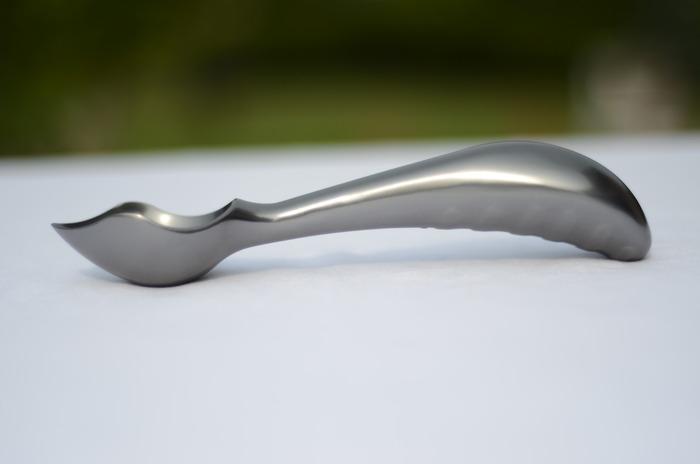
You see, the shape of most ice scream scoops forces you to rely mostly on your wrist joints to scoop. This results in a sort of prying motion that puts a tremendous amount of stress on your wrists, while also limiting the amount of force you can apply with your upper arm and chest muscles.

To remedy this problem, Chou applied his knowledge of ergonomic design and mechanical force to develop the Midnight Scoop. Unlike most traditional scoops, this badboy is built with a wide, slightly curved handle that allows you to keep your wrist straight. Instead of prying and clawing away at the ice cream, you hold the curved end in your palm and push down, using the muscles in your arms and chest rather than the weak ones in your hand and forearm. As you push, the sharp, pointed nose of the scoop dives into the ice cream in and curves naturally, resulting an a perfect, ice-cream-commercial-style scoop every time. Check out the video below to see it in action.
After spending the past three years tweaking the design and perfecting the final prototype, Chou has taken to Kickstarter to bring the Midnight Scoop (named because it was something he typically worked on late at night) to the world. He’s already blasted past his $17K funding goal, and is currently sitting at well over $60K with around 1,300 backers. If you make a pledge before the campaign ends, you can get your hands on one for $45 bucks. Barring any manufacturing problems, Chou expects to ship the first production units to backers as early as December. Find out more here.



